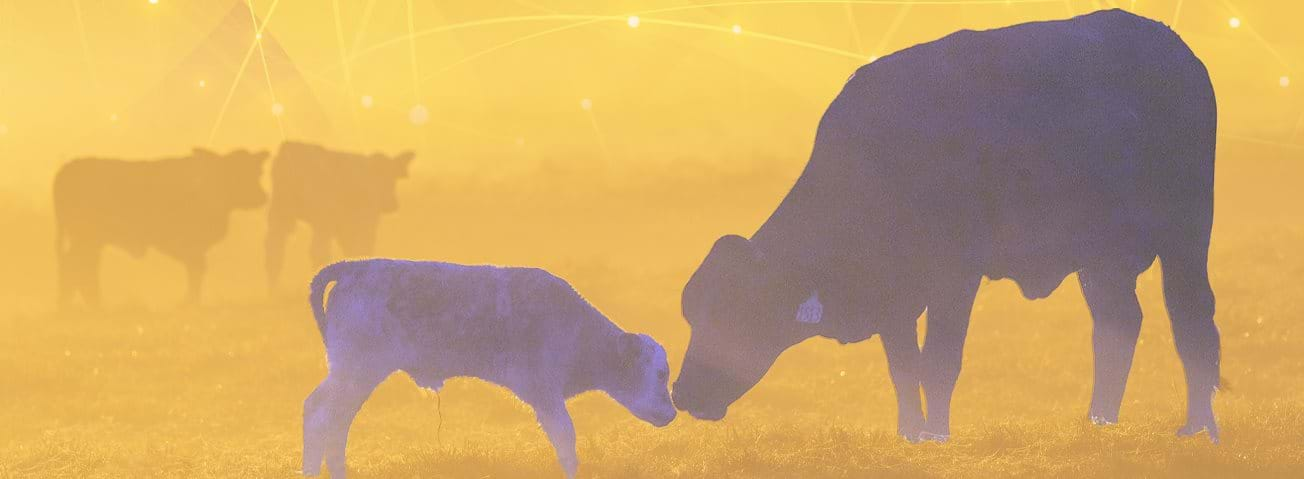Beef Cow-Calf Production Continues To Be a Lifestyle Choice for Some Farmers

The cow-calf stage in raising beef cattle is part of the U.S. agricultural landscape, with a wide variation in farm revenue and production practices across the States. Unlike other sectors in which farms are becoming larger, a relatively high percentage of beef cow-calf enterprises are still small scale. According to the USDA, National Agricultural Statistics Service’s latest Census of Agriculture, more than 622,000 of the 1.9 million U.S. farms—about 33 percent—had at least one beef cow at the end of 2022. Of those farms, about 55 percent had fewer than 20 beef cows. In 2011, USDA, Economic Research Service (ERS) researchers suggested beef cow-calf farming was likely a “lifestyle choice” for many farms based on factors including farm size and owner characteristics. A more recent ERS study showed cow-calf farming continues to be attractive to many farmers for whom lifestyle is likely a primary motivator of farm decision making.
Today’s beef cow-calf operations vary by size, occupation of the primary operator, and income. Using these distinctions, researchers identified three categories of farms for the study: rural residence, intermediate, and commercial. Rural residence farms include two types of small family farms earning less than $350,000 a year from farming. The first is where the principal operator (the operator most responsible for day-to-day decisions on the farm) reports being retired but still makes some money farming. For the second, the operator’s primary occupation is off-farm, and farming activities bring in less than $350,000 a year. Operators of rural residence farms often enter farming for a range of lifestyle motivations sometimes associated with cow-calf production. Intermediate farms are where the principal operator’s primary occupation is farming, and the farm earns annual income of less than $350,000. Commercial farms make up the remainder and earn at least $350,000 a year in annual gross cash income.
In 2018, about 39 percent of beef cow-calf farms were rural residence farms. Rural residence farms held 23 percent of the total U.S. beef cow inventory that year. On these farms, 87 percent of the total farm production value was from cattle (see chart below). Seventy-three percent were cow-calf only, which means they sold their calves shortly after weaning instead of keeping them for subsequent phases of cattle production. These farms rely on off-farm income, such as retirement income or wage and salary jobs to cover household and farm expenses. In contrast, intermediate cow-calf farms depend upon the farm for the majority of their household income and a smaller percentage are cow-calf only. Even for farms that raise crops or other production animals, their household incomes may face income risk through fluctuations in cattle and input prices, as well as weather and disease.
In 2018, an estimated 8 percent of beef cow-calf farms were commercial farms, but these farms held 28 percent of the total U.S. beef cow inventory. On commercial cow-calf farms, 46 percent of the total farm production value was from cattle, and 57 percent were involved in later phases of cattle production such as the stocker segment in which calves are fed on pasture for additional weight gain before sale, or finishing, where animals are fed on the farm until they reach slaughter weight.
The U.S. beef cow-calf industry includes many small farms, in terms of gross cash farm income, on which the farm is not the primary source of income for the farm household. This suggests that while farm profitability is likely an important consideration for these farm operators, lifestyle can also be a factor motivating farm decision making.
Structure, Management Practices, and Production Costs of U.S. Beef Cow-Calf Farms, by Jeffrey Gillespie, Christine Whitt, and Christopher G. Davis, ERS, July 2023
ARMS Farm Financial and Crop Production Practices, by ARMS Team, USDA, Economic Research Service, September 2024
Beef Cow-Calf Production a Lifestyle Choice Among Many Farmers, by William D. McBride and Kenneth Mathews, USDA, Economic Research Service, June 2011
The Diverse Structure and Organization of U.S. Beef Cow-Calf Farms, by William D. McBride and Kenneth Mathews, USDA, Economic Research Service, March 2011



